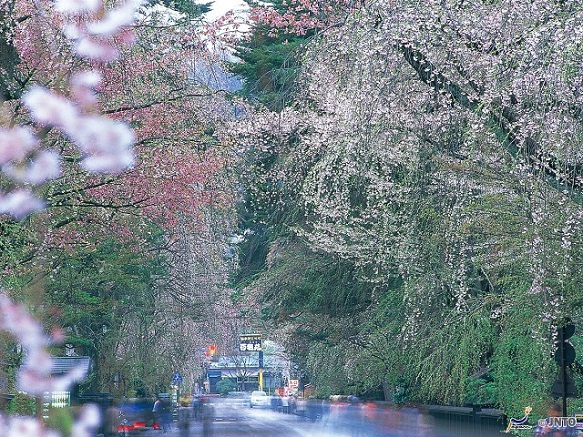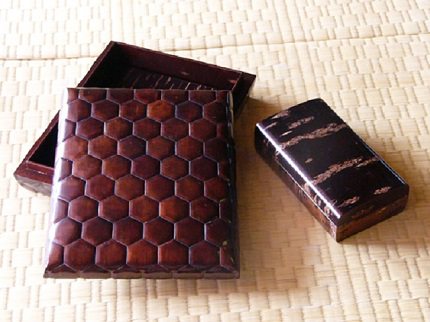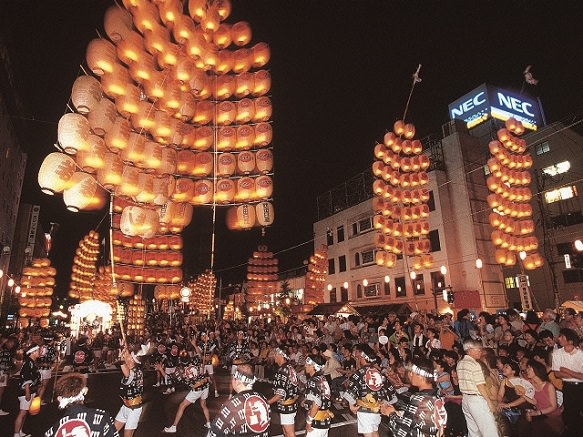-
- USA/Canada 1-800-285-2726
- Australia (02) 8006 4411

Region: Tohoku
Capital: Akita
Population (approx.): 1.086 million (2012)
Area: 4,484 sq miles
Area Rank: 6

Akita is a large prefecture of the northern Tohoku region on the coast of Sea of Japan. A popular tourist destination in Akita is Kakunodate, a former castle town. Although the castle no longer stands, the town still is still popular for its abundant samurai tradition that is rare in other parts of Japan. Kakunodate also becomes a popular cherry blossom viewing spot during the spring when its hundreds of “shidarezakura” or weeping cherry trees, blossom. Stroll down memory lane through the old samurai town surrounded by weeping cherry blossoms. Akita is also a popular hot spring resort area, attracting tourists with its many hot springs including Nyuto Onsen.The warm onsen waters are especially relaxing during its cold winters.
Largest prefecture in Tohoku and the best prefecture of sake and rice
Quiet town east of Akita with refined, elegant feel and called
The collocation of ryokan in the mountain. Tsurunoyu has over 300 years history.
Deepest lake in Japan, color changes from green to blue

Akita is most famous for its rice and sake. Akita’s famous rice is the Akitakomachi, a high-end short grain rice. The Akitakomachi is often used for sushi and is considered one of the top rice brands in the country. Related to rice, the “kiritanpo” is also a very popular dish in Akita. Kiritanpo is a hot pot dish with mashed cooked rice shaped into cylinders served with other hot pot ingredients.
Sake is a large part of the Akita culture. Akita has many breweries due to the great rich, ideal atmosphere, and clear water it has access to. Akita sake is known to be rich yet delicate. As well as the top producer of sake, Akita is also the top sake consumer, consuming 90% of the sake it produces within Akita.
Another local dish from Akita is the "inaniwa udon". The Inaniwa udon originated in the town of Inaniwa in Akita. Inaniwa udon is different than the ordinary udon in that the noodles are flatter and thinner, somewhat similar to a linguine but slightly thinner.

The Minister of Economy recognizes four traditional crafts from Akita Prefecture: Kabazaiku, Kawatsura lacquer, Akita Cedar Casks, and Odate Magewappa. Kabazaiku is a form of wood work using the cherry tree barks. The wood of the tree is cut into the desired shape then covered with the bark which has been cleaned, smoothed, and uniformed. Each surface requires a specifically shaped piece of bark to match the shape of the surface, making the process very time consuming. Production of kabazaiku was a side job for samurais who needed the additional source of income. During the Meiji Period when samurais were no longer needed, many former samurais of Akita resorted to kabazaiku-making for their main source of income. Kabazaiku is used to create various products such as tea containers, trays (obon), ink boxes, etc.

Akita Kanto Matsuri takes place every summer in August and is one of the three major festivals of the Tohoku region. The festival originated during the Horyaku Period (1751-1763) which prayed for good harvest and purification. During the Kanto Matsuri, "kanto", or long bamboo poles, which have paper lanterns attached to the other end are balanced on the performers' heads. The kanto vary in size, but the largest measures as long as 12 meters, weighing over 100 lbs. The talented performers balance the kanto with approximately 45 paper lanterns with real candles. Performers balance the kanto in many ways, on top of their heads, chest, hands, and even their backs. The exhilarating festival takes place as drum and flute tunes as well as chants from the performers and onlookers fill the air with excitement.
Folklore characters, people wish the families good luck for the upcoming year in Akita
Pole lantern festival in Akita, held every August 3-6
Yomemi Matsuri is an Akita festival which literally translates to Bride-seeing Festival